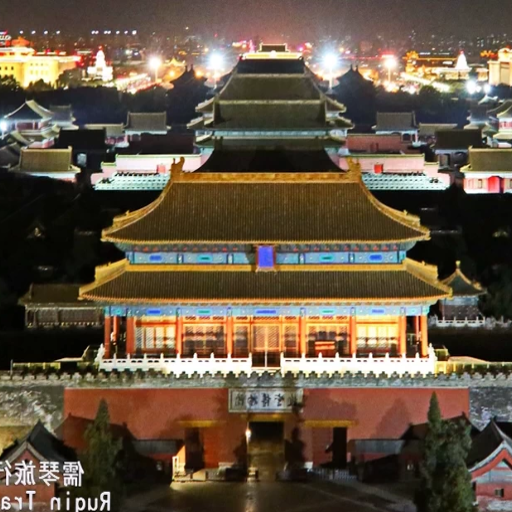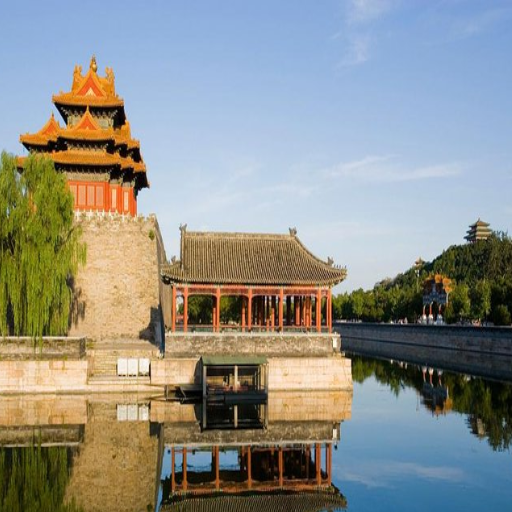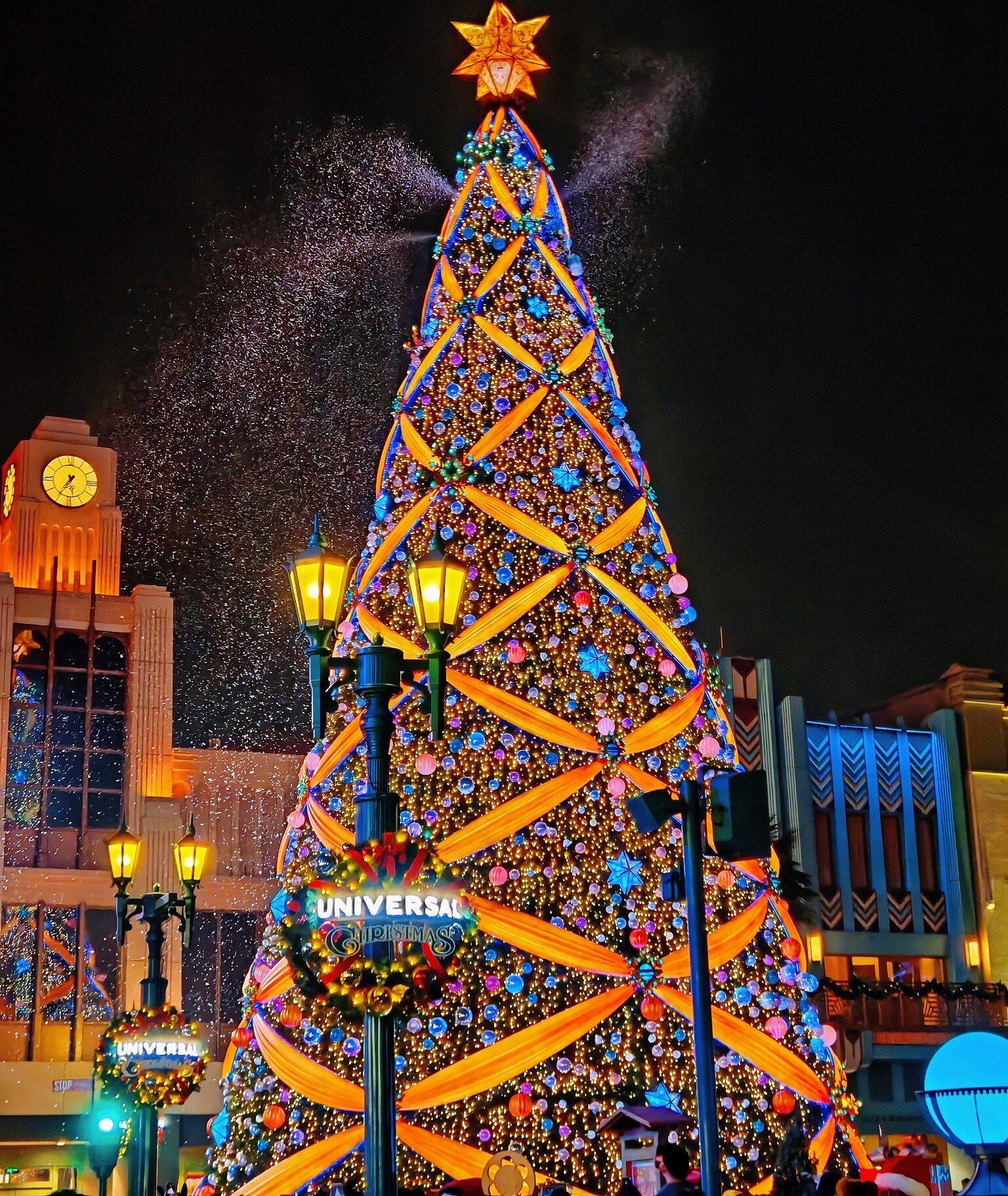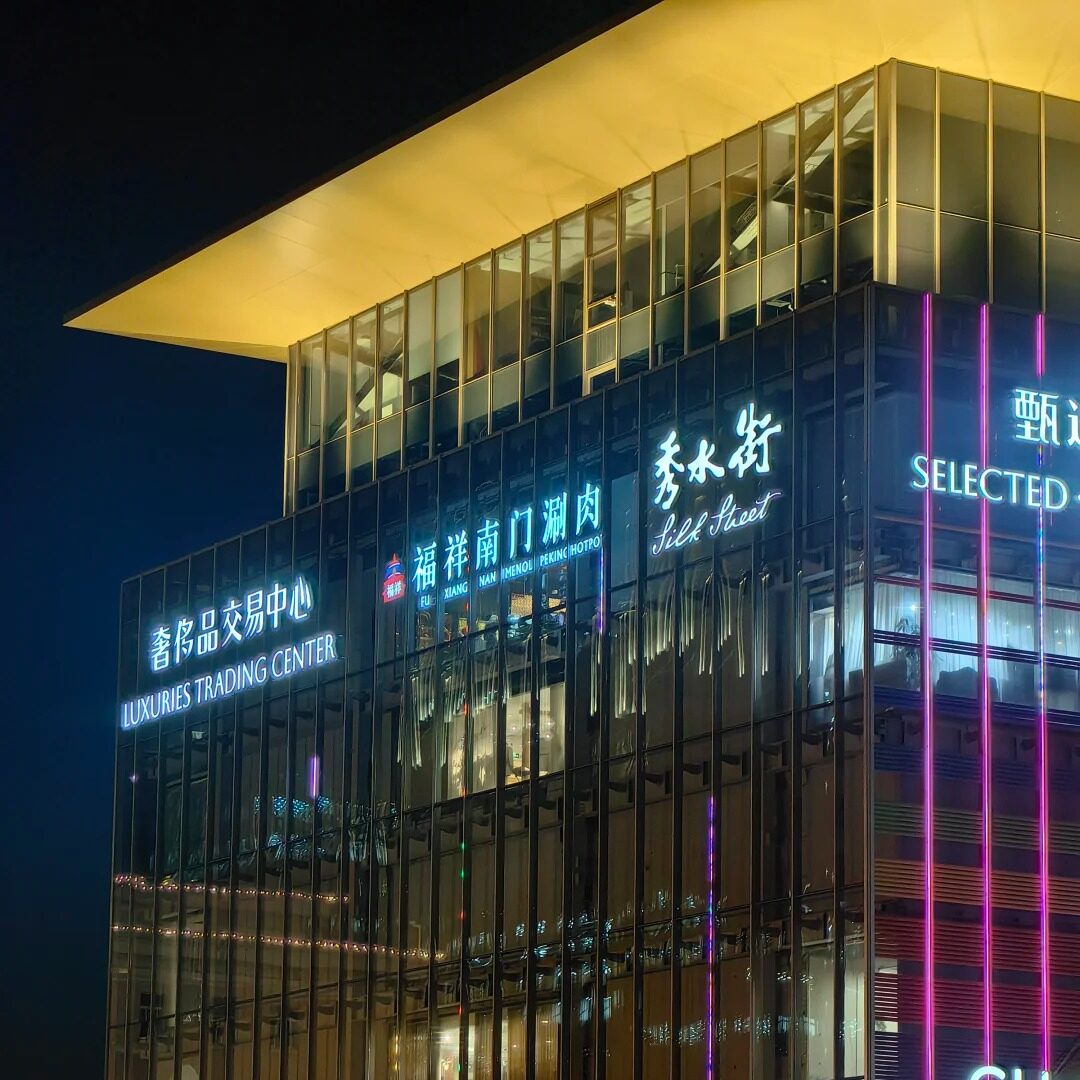Considered a marvel of architectural mastery and one of the largest ancient palace complexes in the world, the Forbidden City is renowned as a UNESCO World Heritage site and a remarkable tourist attraction. The Ming and Qing Dynasties’ ancient relics preserved within offer unparalleled insight into over 500 years of Chinese history. Travelers with an insatiable thirst for culture and history and folks who admire architectural wonders will thoroughly enjoy their venture into the Forbidden City. In this guide, you will be provided with essential information and tips for visiting this landmark, along with the captivating tales that comprise its rich culture. Embrace yourself for a journey translating into boundless charm and a deep dive into timeless slices of history.
What Are the Must-See Highlights in the Forbidden City?

Key Attractions Inside the Forbidden City
Stretching across 180 acres, the Forbidden City has more than 900 ancient and historical buildings preserved, which are an architectural and historical treasure. The following are the key attractions that stand out in the exploration of the imperial palace:
Taihe Dian (Hall of Supreme Harmony): The most magnificent building within the Imperial Enclosure is where the emperors performed essential functions and celebrations like crowning and royal marriages. Every visitor is amazed at the artistry from the Ming and Qing dynasties because the golden roof is rich in detail alongside stone carvings and wooden beams.
Wumen (The Meridian Gate): This southern gate is the main entrance of the Forbidden City and a crucial component of its layout, as it represents the empire's sovereignty. It has five ways, each of which distinguishes the rank of the coming people, with the central passage meant for only the emperor.
Qianqing Gong (Palace of Heavenly Purity): The Palace served as a residence and an administration center for the emperor to rule and govern as a dual head of state. It is lavishly furnished with mahogany and adorned with dragons, a symbol of imperial significance and rich in decor.
The Imperial Garden (Yuhua Yuan): Located at the northern end, this green space has an elaborate arrangement of rockeries and ancient cypress trees, making for a tranquil escape. It showcases the peace achieved from the balance between nature and architecture, which Confucians hoped for.
The Nine-Dragon Screen: This glazed tile wall is one of three nine-dragon screens in China. It is a fantastic display of color and meaning. The screen was built to shun evil spirits and is a remarkable testament to Chinese artistry.
These attractions offer an incredible opportunity to admire and immerse yourself in the beauty of China’s glorious imperial history. Pay close attention to each corner of the Forbidden City to appreciate the intricate details, bas-reliefs, stories, and rituals etched into the architecture.
Exploring the Rich History of the Palace Complex
The masterpiece of ancient Chinese architecture, the Forbidden City, still exists as a testament to imperial strength and magnificence. Built in the Ming dynasty during the early 15th century, this palace complex covers over 180 acres and contains nearly 1,000 buildings. This complex’s arrangement mirrors ancient Chinese geomancy, demonstrating symmetry, equilibrium, and orderly configuration. The palace's central axis signals its dominance, with the most essential rooms used for government ceremonies and the emperor's private chambers placed deeper into the complex for maximum security and privacy.
Filled with symbols, the Forbidden City has many details that tell a story about the emperor and what he represents. The rooftops are colored yellow, which signifies imperial power. The courtyards also felt orderly and boosted the emperor's sense of control. Over a million workers were employed, including craftsmen who vividly carved stone, wood, and bronze into mythical beasts, historical scenes, and other auspicious designs.
In addition to serving as a site for exquisite Chinese artwork, it's an astounding feat in ancient engineering. The construction came with features such as advanced drainage systems and fire prevention techniques, which were highly sophisticated.
Understanding the Legacy of the Ming and Qing Dynasties
Two critical periods in Chinese history include the Ming (1368–1644) and Qing (1644–1912) Dynasties. They are remembered for their culture and governance. The Ming dynasty fueled a cultural renaissance in China, which was accompanied by a spike in literature, painting, ceramics, and architecture. A prime example of this artistry was the construction of the Forbidden City, which symbolized imperial authority during the rule of the Ming dynasty. During this period, the Ming dynasty encouraged centralized governance as a bureaucratic system and strictly enforced Confucian ideals, making them instrumental for future Chinese governance.
After the Ming dynasty, the Qing took over and annexed Tibet, Xinjiang, and Mongolia, thus further expanding China's frontline. The trade which relied on the Silk Roads as well as sea routes was thriving along with attempts at stability fostered by "Manchu-Han unity." Fulfilling the Qing's notable projects of promoting cultural and linguistic identity through the compilation of the Kangxi and Qianlong dictionaries also saw the construction of these dictionaries during this period.
Not only did both dynasties focus significantly on China's agricultural policies, but they also invented better irrigation systems and new high-yield crops like sweet potatoes. Accompanied by a rapidly growing population, China was able to socially structure itself for the first time. Along with masterfully achieving culture and governance, the two periods shaped the modern Chinese identity, which stays prominent even today.
How to Plan Your Palace Museum Visit?

Best Time to Visit the Palace Museum
When it comes to visiting the Palace Museum, also known as the Forbidden City, the optimal time to go is dictated by weather conditions, crowds, and personal interests. Winter months like March to May and September to November are the best seasons since they offer moderate temperatures and a clear sky, which helps get the most out of the visiting experience. During these months, extremes are quite rare, translating to an average of 50 to 70 degrees Fahrenheit, giving ample opportunity for leisurely strolling through the expansive courtyards and soaking in the impressive ancient architecture.
Weekdays and dates like Chinese New Year or the Golden Week in early October should be considered to avoid peak crowds. As with most places, the mornings (especially during business opening hours) are not as crowded and provide a less rushed visit. November to February, while colder, does mean the museum is quiet, which is perfect for people who don’t mind the brisk winter weather.
Essential Tips for a Successful Itinerary
To have a rewarding and smooth travel itinerary, we'll be giving tips to ensure you're getting every small detail right. First, gather every single must-see location and account for time spent so you can maximize the time spent at each site and fully immerse yourself. Sites nearby can also be paired to minimize travel time and create a more streamlined and practical day.
Consider the season, weather, and events in the region that might affect specific things, such as crowd levels or overall access. An example is going during the quiet periods for a better experience, while some off-peak periods and out-of-season traveling can be counterintuitive during commotion-focused times. Still, for many cultural experiences, it can attract a lot of crowds. Always consider the impact of time between certain places and have some extra time allocated for unexpected delays.
If traveling long distances, check the availability of local cars or ride-hailing services to help navigate public transport more easily and smoothly between locations. Also, these days, pre-booking tickets is more accessible, especially for must-see attractions, which can help in better time management and ensure access. Having a balance between some idle and busy time guarantees that the best experiences of a trip and the most unexpected trip experiences come together.
What to Expect on a 4-hour Small Group Tour
The 4-hour small group tour goes beyond superficial sightseeing, allowing a traveler to engage with the destination at a personal level. It is more focused and effective as it caters to a smaller group of participants. Such tours are more interactive and engaging, combining skills development with immersion and enough local flavor to meet personal preferences for history, culture, gastronomy, or even nature.
A well-crafted program optimally utilizes the available time and strives to meet essential goals while uncovering many “secret” places that larger tours tend to ignore. For example, a guided walking tour around a city's historic part includes famous sights and some “secret” streets, shops, and many more to give a thoroughly engaging experience. The guides are often local experts who tailor detailed commentaries to include personal stories and expertise for added value.
If included, transportation is usually adequate and includes a small van or even a boat and bicycles for more active trips. Moreover, there are well-timed pauses where you can freshen up, take pictures, or relax and soak in the experience. Overall, the small group tour creates a feeling of belonging while providing an engaging and enriching four hours of learning and fun.
What Can You See Near the Forbidden City?

Top Attractions Near Beijing City
Tiananmen Square: Now, renowned as one of the largest public squares worldwide, it is found south of the Forbidden City. Modern Chinese history has placed this site at the very core of culture and politics, making it an area of great importance. While visiting, one can see the National Museum of China, Chairman Mao Memorial Hall, and other prominent landmarks, including the expansive Monument to the People's Heroes.
Jingshan Park: Known as an exquisite peak of Beijing from where one can capture panoramic overlooking views, Jingshan Park is positioned right above the Forbidden City. Formally named an imperial garden, it is a hotspot for photographers and those who appreciate traditional Chinese horticulture. In spring, the Park allows one to witness carefully placed peonies and calm areas where tai chi practitioners gather.
Beihai Park: Beihai Park is known to be one of the oldest imperial gardens in China. Only a short distance from the Forbidden City, the park features a vast lake where pedal boats can be rented. Visitors can view various small islands with beautiful bridges connecting them and visit the White Dagoba, which is a well-known Buddhist dome.
Wangfujing Street: One of the most well-known shopping areas, Wangfujing Street is a district full of shops offering local goods, brand-name clothing, and appetizing street food. The decorous atmosphere blends traditional city elements with modern lifestyle features, showcasing boutique and souvenir shops and time-honored snack stalls.
The Temple of Heaven: The Temple of Heaven is one of China's most important architectural sites and a UNESCO World Heritage site, making it a must-visit when in Beijing. Famous for the circular-shaped Hall of Prayer for Good Harvest and its beautifully constructed gardens, it also serves as a complex that emperors used to visit every year for religious ceremonies.
When visiting Beijing, each landmark adds a unique touch to the travel experience, with history, culture, and exquisite beauty that captivates every traveller.
A Day Trip to Mutianyu Great Wall
A trip to Beijing is incomplete without visiting Mutianyu Great Wall, which forms a breathtaking section of China’s most recognized masterpiece, the Great Wall of China. Famed for its magnificent scenery and rich historical importance, this section is less crowded than other regions. It was built in the 6th century and simultaneously renovated during the Ming Dynasty, which makes it about 1500 years old. It stands at a distance of ~43 miles (70 kilometers) from Beijing city centre and possesses dense green forests around the mountains, providing majestic views throughout the year.
Visitors can explore 23 robust towers linked by the grand walls, which offer stunning stonework that complements the breathtaking views. Aerial views from the walls are sure to charm every visitor. For easy access, a cable car lifts the traveler within close range of the walls, while a fun toboggan ride down the wall adds entertaining value. In addition to the dining and shopping kiosks, visitor centers and restrooms are also available. The commercials around make sure every person can relax and enjoy their time. All who love historical information or enjoy exploring calm places are welcome to enjoy distraction-free nature and visit the Mutianyu Great Wall.
Visiting the Temple of Heaven
The Temple of Heaven in Beijing is an architectural masterpiece and a cultural heritage site from the Ming and Qing dynasties. It covers an area of 660 acres, almost four times the size of the Forbidden City, reflecting deep spiritual significance. Built as a site for imperial rituals, it served as a place for solemn ceremonies to pray for bountiful harvests and peace between heaven and earth.
Visitors today can also see the Circular Mound Altar, where ceremonies to honor heaven were performed. This monument, coupled with Echo Wall, a monument famous for its long-distance sound transmission, allows tourists to marvel at the acoustic wonder. Revered as the number one place for tai chi practice, the Temple of Heaven features breathtaking architecture and historical relevance, further enhanced by the vibrant culture of locals.
The location still stands as a popular site for tourists and locals who gather in the mornings to practice tai chi, play traditional wind instruments, and bask in the calm atmosphere. The grandeur of the design, for Good Harvests, is a hallmark of its zenith, and it showcases an emblematic rotunda composed of wood and void of nails, evocative of complete equilibrium. Bordering the quintessential element is an exquisitely arranged woodland park with ancient cypress, creating a peaceful oasis.
How to Book Your Guided Tour?

Tips for Booking Tickets to the Forbidden City
A smooth trip to the Forbidden City starts with thoughtful planning and makes the experience more enjoyable. Tip number one:
Buy Tickets In Advance: Due to daily limits, booking the ticket beforehand is useful, and paying through online methods is even more convenient. Online payment is safe and offers various preferred time slots. Authorized third-party vendors and official sites offer reliable options.
Be Aware of the Daily Cap Limit: To ensure preservation, the Forbidden City caps the booking at 30,000 visitors a day. If you want to visit during peak seasons, be ready to book in advance, as it's crucial.
Carry Valid ID: While tickets are being pre-purchased, the other side of ID authentication requires the customer to present valid documents, such as a passport. Your information should reflect the details given during booking to avoid issues later.
Be Punctual: Similar to other attractions, Forbidden City's golden hours are marked within its schedule, so you need to be punctual to avoid inconveniencing the staff in place. Always have a buffer for time delays as well.
Look into Thematic Guided Tours: While self-guided tours are available, they streamline the process, and the reason behind that is that the ticketing system is much easier to follow. The architecture, along with its monumental history, is provided by adept professionals, easing the overload of information while giving a glance into the Forbidden City.
Skip Busy Hours: For a quieter experience, consider coming in the early morning or late afternoon. Weekdays also tend to have fewer visitors than weekends.
With these suggestions, you will be able to roam this famous historic landmark more smoothly and fully optimize your time there.
Understanding Cancellation Policies
Because of the varying services, attractions, or tickets purchased, it is paramount to evaluate the booking terms due to varying cancellation policies. Many popular attractions accommodate travelers with tight and unpredictable schedules by offering flexible cancellation policies that permit complete cancellation of bookings up to 24 or 48 hours prior. However, some tickets, particularly those for special or heavily discounted occasions, may be non-refundable or more restrictive than usual.
Moreover, there may also be a distinction between refundable and reschedulable; in some cases, while no monetary refund is offered, the date or time booked could be changed without additional fees. It is essential to mention that last-minute cancellations or change requests almost always violate time constraints and thus incur an additional penalty fee. Familiarizing oneself with these policies ensures that steps can be taken to make informed decisions, which allows the traveler to avoid unforeseen expenses when plans need to change.
Why Choose a Private Tour?
Private tours are bespoke journeys, offering full customization for the traveler’s itinerary and pace. These tours offer a personalized service, unlike group tours, which provide fixed itineraries. Private tours ensure a more personal approach to customer service, which can be deeply appreciated when relevance is given to the attention span the customers require. Such private tours allow the traveler to have exclusive focus from a personal guide who can share essential information relevant to the interests of the party.
The atmosphere is more intimate and exclusive to families, couples, or small friend groups. Such small private tours allow the guests to evade possible waiting time or emerging difficulties in the logistics of a bigger group arrangement. Additionally, there are fewer risks of encountering the public after a pandemic for safety purposes. Such a tour promotes a safer and more hygienic method of travel. Travelers buying such private tours enhance their journey, making it multi-faceted and simple by turning it into a remarkable adventure that corresponds with what they wish for most.
What is the Best Itinerary for a City Tour in Beijing?

Exploring Tiananmen Square and Forbidden City
Tiananmen Square remains one of the largest city squares around the globe. Moreover, it serves as a historical and cultural centerpiece for Beijing. The square contains the monument to people's heroes, which marks the dead who successfully assisted in the revolutionary efforts. Further to the south, still next to the square, sits the mausoleum of Mao Zedong, giving the people a window into his legacy as the founding father of the People’s Republic of China.
It does not even take a full five-minute walk from the square to reach the Forbidden City. This masterpiece is a world heritage site and a must-see traditional Chinese attraction. Once that also served as the residence to some of the empires during the Ming and Qing dynasties, this mesmerizing palace complex still stands with pride as it contains almost 1000 unique and colorfully detailed vividly intricately structures, with some key elements being 'Hall of Supreme Harmony, Palace of Heavenly Purity and the Imperial Garden. ' Making it reason enough to visit 'The Forbidden City' will allow you to experience imperial China's beauty and understand the ancient art, unrivaled politics, and cultural elements quintessential to this nation.
Combining the Great Wall of China with Your City Tour
Your city exploration will benefit significantly from exploring the Great Wall of China. At the same time, it can also be described as the cherry on the cake as it seamlessly blends nature with history. Among the sections of the Great Wall most easily reached from Beijing, Badaling, Mutianyu, and Jinshanling all possess magnificent views and interesting architecture, despite some differences. For example, Mutianyu's lesser-known popularity due to previously restored features and lower crowds makes it more suitable for families or those looking for a more tranquil trekking experience. In contrast, Badaling is easier to access and is of great historical importance, being one of the first sections opened to tourists.
With a Great Wall hike, you can tour Beijing, combining a glimpse into ancient Chinese heritage with a sensational experience of the country's capital. For the most engagement, start early to beat the rush and use private shuttles or group tours for greater flexibility. Well-known itineraries include the Forbidden City and the Summer Palace, supplemented with delicious locally sourced dishes so travelers benefit from China's rich culture and history in a single day.
Unmissable Sites: Summer Palace and More
As a site included in UNESCO’s World Heritage list, the Summer Palace is not only a treasure of China’s engineering might, but also a medley of imperial history and distinctly unparalleled in the design of gardens. The palace features grand landscapes such as Kunming Lake and Longevity Hill, and it also has intricate manmade structures that blend with nature. The area spans over ~700 acres, fully equipped to metaphorically and literally ‘take your breath away.’ Tourists can appreciate other places such as the Marble Boat, where an ingenious design showcases a boat made of marble, and the Tower of Buddhist Incense, where you can indulge in vast vistas.
Other places in Beijing that cannot be missed include the incredible Temple of Heaven, an ancient complex well known for its circular-shaped buildings. It is of great importance due to its use in traditional Chinese rituals concerning the heavens. The calm shores of Beihai Park are also remarkable in that they provide a still refuge from the clamorous city full of pavilions, and a stunning white Dagoba placed on Qionghua Island. Fahrradtour Berlin. Such places will simply take you to another world with the fantastic mixture of beauty, artistry, and culture.
Frequently Asked Questions (FAQs)
1. When Should the Forbidden City Be “On Your List”?
The Forbidden City is best visited during spring (April to June) and autumn (September to early November) because of the mild and pleasant weather. These seasons bring fewer crowds than peak tourist months. Do not visit during public holidays like Golden Week because the site tends to get overly congested.
2. What is the Time Required to Spend on the Tour of the Forbidden City?
Most people allocate 2-3 hours to visit the Forbidden City, but to appreciate its vast scope, intricate layout, and historical exhibits, it is better to budget around 4 hours. Smoothly running helped the company understand the value of guided tours, which enable guests to make the most of their time by visiting the key attractions.
3. What are the Pricing and the Visit Requirements For The Forbidden City?
Tickets to The Forbidden City are 60 yuan per adult during peak season and 40 yuan during off-peak periods. They often have lower pricing for students and elderly citizens. Purchasing tickets is mandatory before visiting, and it is best to do so a few days before to ensure eligibility to visit on a specific day.
4. Am I allowed to bring a guide to the Forbidden City?
Yes, you can bring a guide with you or hire a professional guide service available at the site. Many people who visit prefer to book a private guided tour in advance so that they can better understand the historical importance of the Forbidden City and its many stories tucked away beneath the surface.
5. What is appropriate attire for visitors to the Forbidden City?
Appropriate clothing includes comfortable shoes that are as close to walking as possible since the Forbidden City requires a lot of walking, often over uneven stone pathways. During summer, visitors should carry a water bottle, wear a hat, and apply sunscreen because the open courtyards are pretty warm. People visiting in winter should dress warmly as winters in Beijing are very cold.
6. Is videography and photography allowed in the Forbidden City?
Visitors can take pictures in most areas of the Forbidden City; however, using tripods or drones is strictly prohibited. Specific museum exhibits might also have photography restrictions; thus, some signs or staff must be consulted before photography to know the rules.
7. Can disabled individuals visit the Forbidden City?
Absolutely. Over the years, the Forbidden City has been making attempts to improve access for visitors with disabilities. There are marked accessible pathways and designated accessible restrooms, but places with traditional high steps and old, rough paths may pose problems. It is best to look for the latest information about access options and visit accordingly.


